Okayu is an ideal Japanese dish when you have a small appetite or want something easy on the stomach. The natural flavor of the rice and its soft, porridge-like texture make it easy to eat without upsetting your stomach, even when you are feeling under the weather.
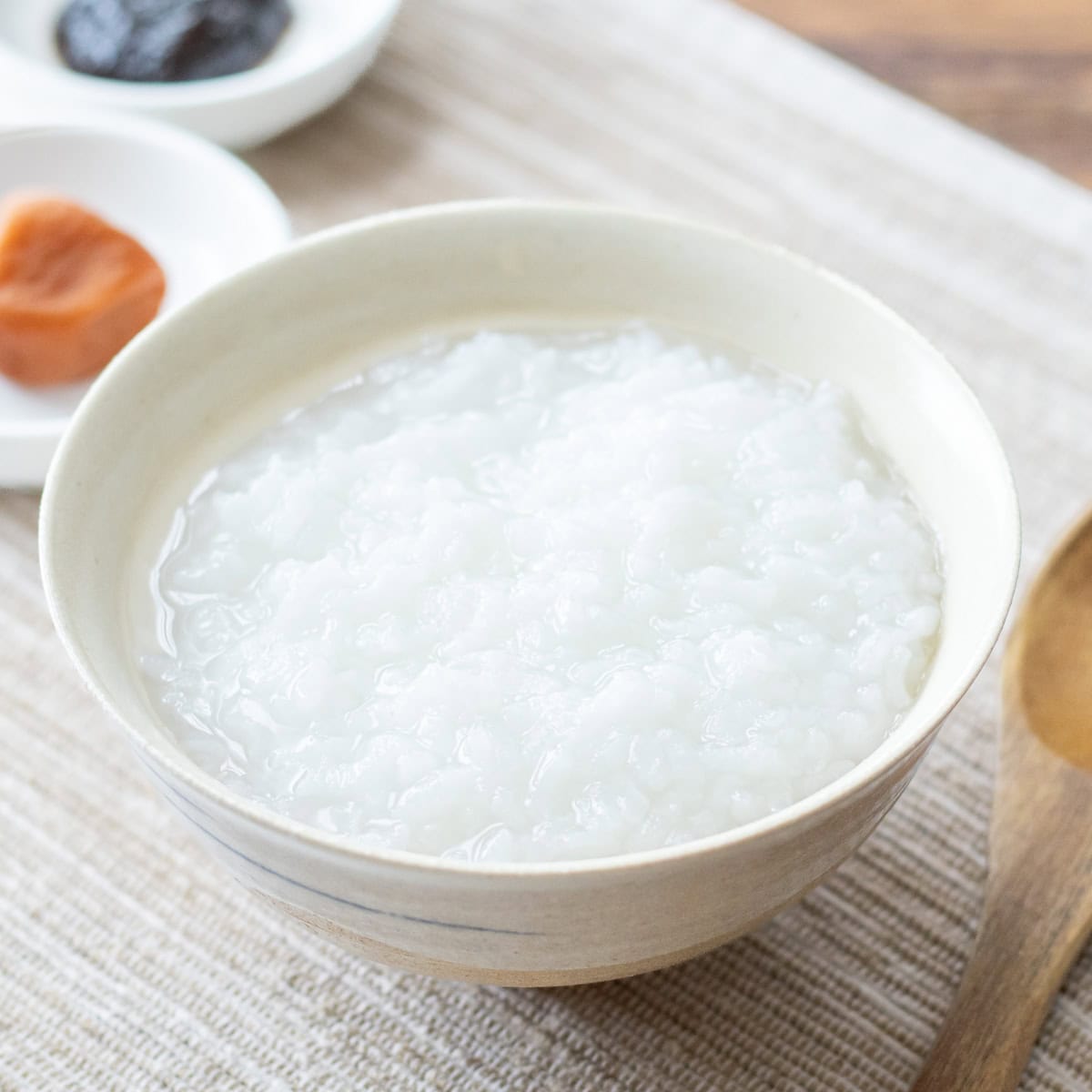
Jump to:
What is Okayu?
Okayu is a simple and comforting dish made by simmering uncooked rice in plenty of water until it reaches a soft, soupy consistency. It is typically made with just white short-grain rice, water, and a very small amount of salt for seasoning, and is known for its thicker texture compared to other Asian rice porridges, such as Chinese congee.
With its very mild flavor and gentle texture, this rice dish is easy on the stomach and is traditionally eaten not as an everyday meal, but rather during times of illness, as nourishing food for the elderly, or as baby food during weaning. Especially when you are feeling under the weather, the soothing warmth and digestibility of okayu can feel incredibly comforting.
Since it requires cooking the rice, it takes some time to prepare, but most of that time is just simmering—so the actual hands-on time is only about three minutes. Whether you are feeling unwell yourself or caring for someone who is, try making this dish. It will surely be appreciated.
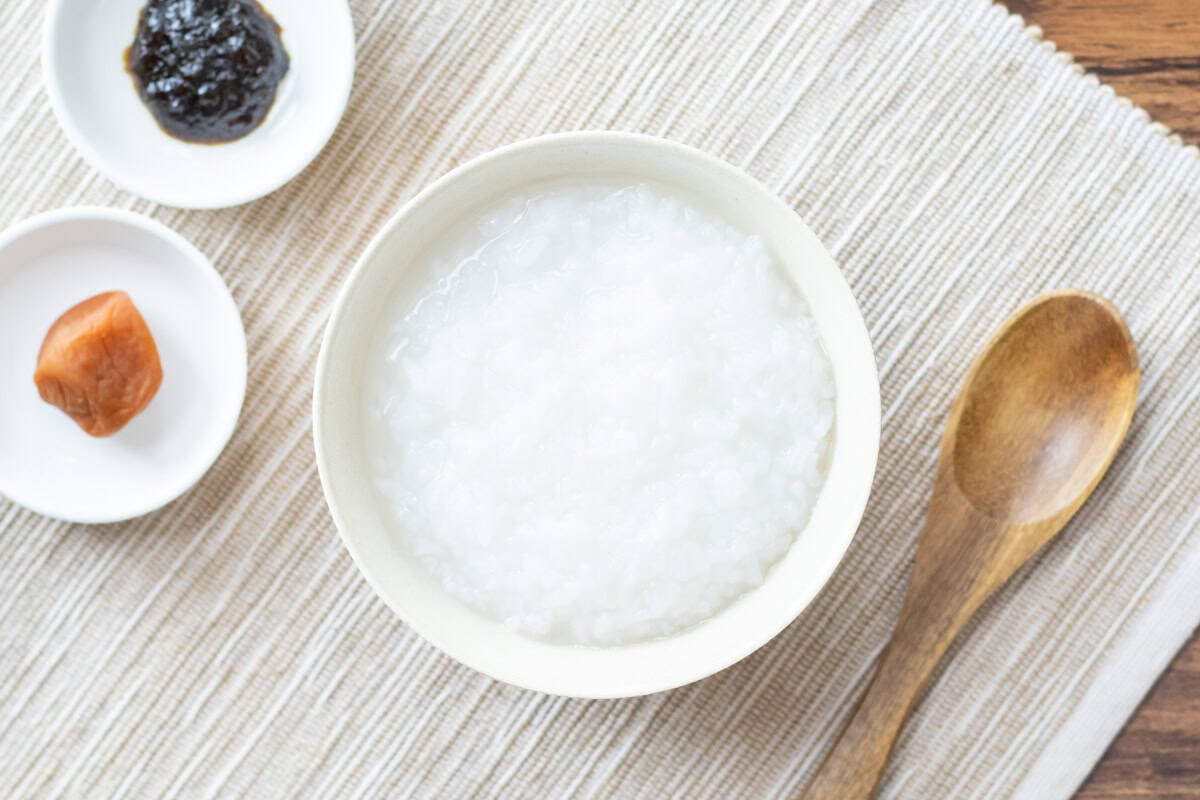
Types of okayu and their textures
The texture of okayu can vary depending on the ratio of rice to water used in its preparation. In Japan, these ratios are well established and even have specific names that correspond to the water-to-rice volume ratio. Here are the most common types:
Zen-gayu (full porridge)
- Rice-to-water ratio: 1:5
- Texture: Most of the rice grains remain intact, and there is very little porridge liquid.
- Recipe adjustment: Use 2 cups of water (450 ml or 2 ½ rice cooker cups).
- Recommended if you prefer to retain the texture of the rice.
Shichibu-gayu (70% porridge)
- Rice-to-water ratio: 1:7
- Texture: About 70% rice and 30% porridge liquid.
- Recipe adjustment: None (follow the recipe as is).
- This is the most typical style of okayu that many Japanese people think of.
Gobu-gayu (50% porridge)
- Rice-to-water ratio: 1:10
- Texture: About 50% rice and 50% porridge liquid.
- Recipe adjustment: Use 3 ¾ cups of water (900 ml or 5 rice cooker cups).
- Ideal for those who prefer a thinner, more watery consistency.
Sanbu-gayu (30% porridge)
- Rice-to-water ratio: 1:20
- Texture: About 30% rice and 70% porridge liquid.
- Recipe adjustment: Use half the amount of rice and 3 ¾ cups of water (900 ml or 5 rice cooker cups).
- It is almost like a liquid meal, making it suitable for those with little or no appetite.
My recipe follows the shichibu-gayu style (70% porridge), but you can also make okayu with different textures by adjusting the rice-to-water ratio to suit your preference. When you are feeling under the weather or don’t have much of an appetite, it is best to increase the water ratio. Feel free to experiment and find the consistency that suits your taste and condition.
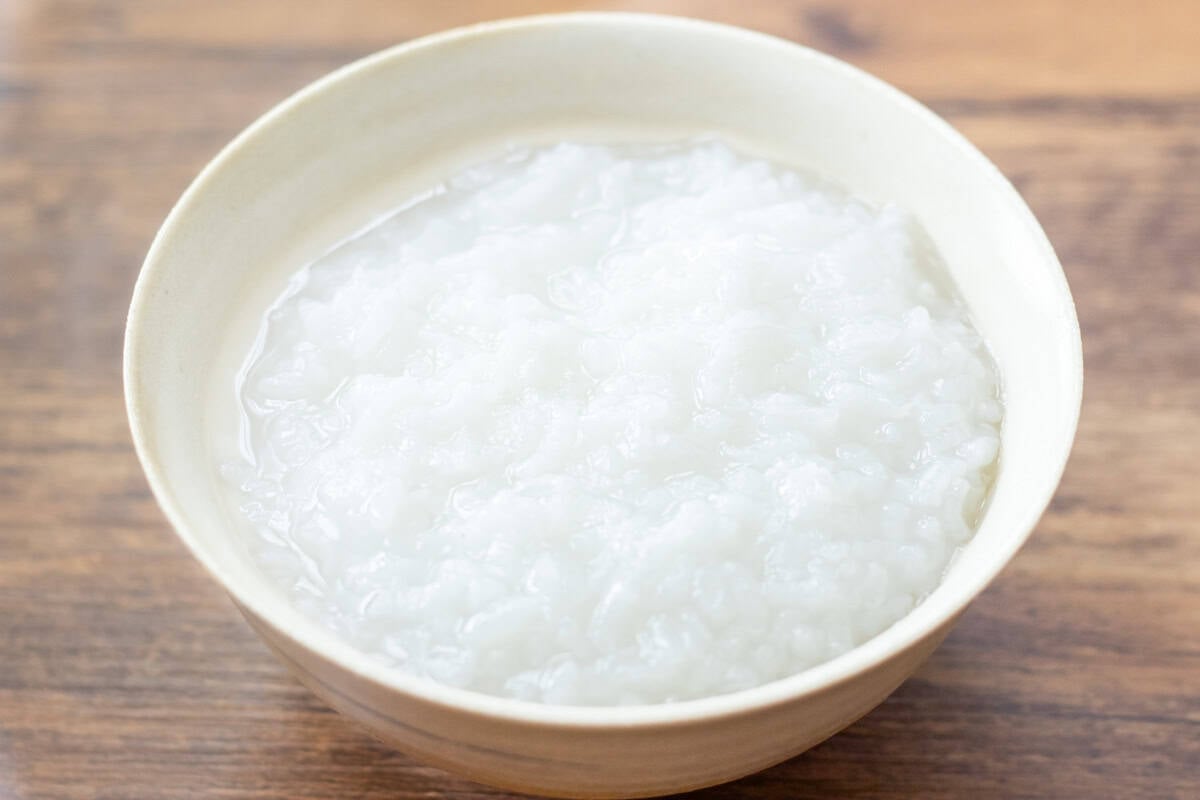
Classic toppings
Okayu is typically seasoned with just a small amount of salt, so some people might find it too mild. In addition, when you are feeling under the weather, eating the same plain okayu every day can get a bit boring. If that is the case, try adding some of the following toppings to mix things up:
- Umeboshi (pickled plum)
- Nori no tsukudani (nori seaweed paste)
- Shio kombu (salted kelp)
- Shaved bonito flakes
- Flaked grilled salmon
- Tarako (salted pollock roe)
- Mentaiko (spicy pollock roe)
These are all classic toppings in Japan that add flavor and color to okayu. Feel free to experiment based on your preferences. Just a small amount can make a big difference and help keep things interesting.
How okayu differs from zosui
Some people who are familiar with Japanese cuisine may know of a dish similar to okayu called "zosui" (Japanese rice soup). Both involve cooking rice in a large amount of liquid, but there are some key differences between the two.
Okayu: Made by simmering uncooked rice. It uses a higher water-to-rice ratio, resulting in a very soft texture that is easy on the stomach. It is typically seasoned very lightly, usually consisting of just rice, water, and a small amount of salt.
Zosui: Made using cooked rice. Since it contains less liquid than okayu, the rice grains tend to remain intact. It is often cooked with dashi stock, eggs, vegetables, or seafood, and typically has a somewhat stronger flavor. It is also commonly made using leftover broth from nabe (Japanese hot pot) dishes.
You might occasionally come across okayu recipes that use cooked rice, but strictly speaking, these would actually be considered zosui, not okayu, as they are not made from raw rice. That said, when similar ingredients are used, the two dishes can appear nearly identical. Using cooked rice can also make it quicker to prepare a zosui that resembles okayu.
Especially when you are not feeling well, it is best to prepare something easy on the stomach using the simplest method possible. My recipe includes instructions for both traditional Japanese okayu made from raw rice and a quicker, okayu-style zosui made from cooked rice. Feel free to choose whichever method best suits your needs.
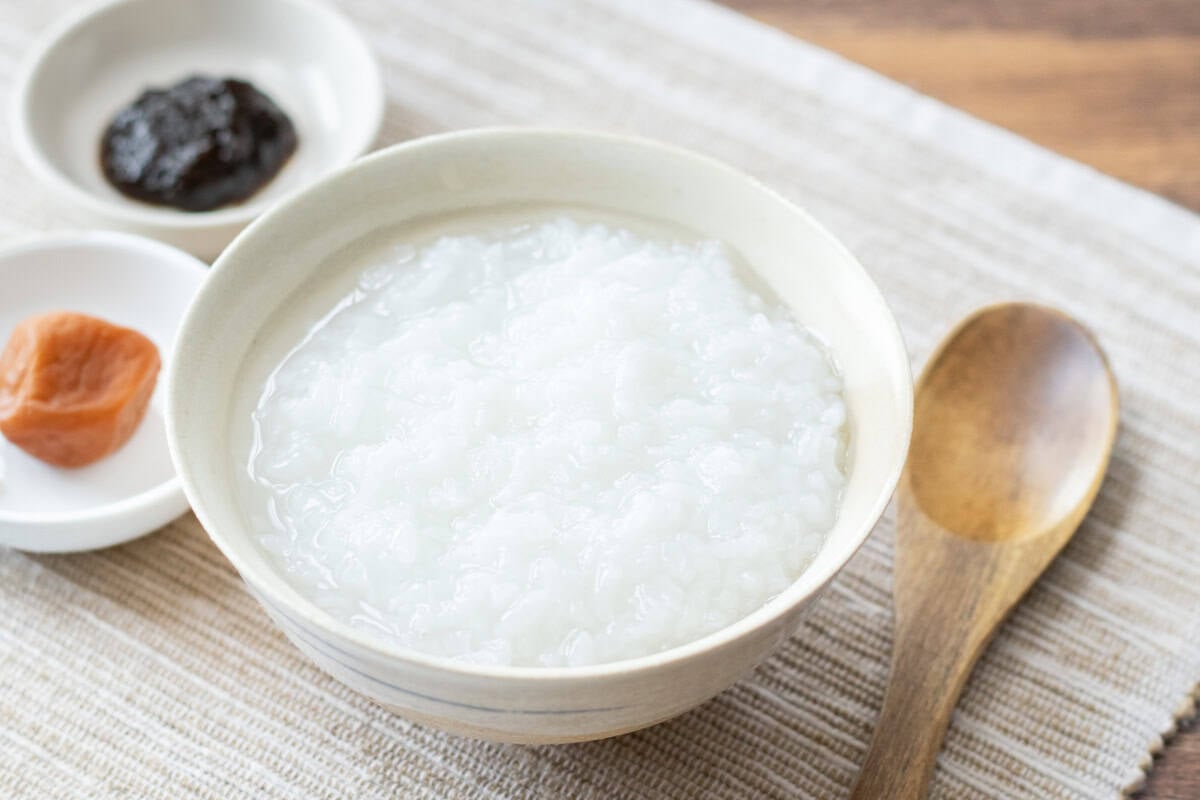
📋Step-by-step recipe
Ingredients
For traditional Japanese okayu (using uncooked rice):
- ⅜ cup Japanese short-grain rice (½ rice cooker cup for 2 servings)
- 2 ⅔ cups water (3 ½ rice cooker cups for 2 servings)
- ⅙ tsp salt
For a quicker version of okayu (using cooked rice or microwavable rice):
- 5.7 oz cooked Japanese white rice (If using microwavable rice, heat it before using.)
- 1 ⅓ cups water
- ⅙ tsp salt
Instructions
To make traditional Japanese okayu (when using uncooked rice):
🕒 Total: 45 minsYou can adjust the rice-to-water ratio to make okayu with different consistencies. For more details, please refer to the section above titled “Types of Okayu and Their Textures.”
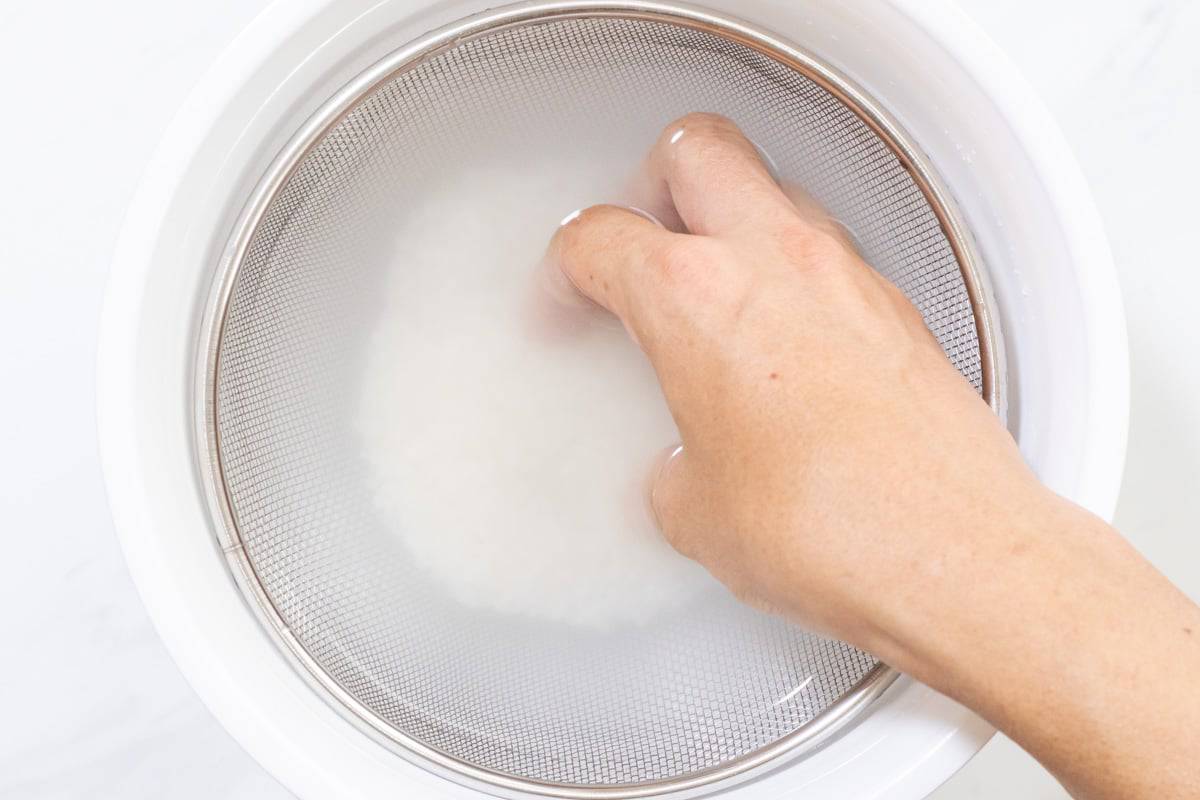
Step 1
Place a sieve over a bowl, add rice, and rinse it with water (not listed in the ingredients). Repeat this process several times, changing the water each time.
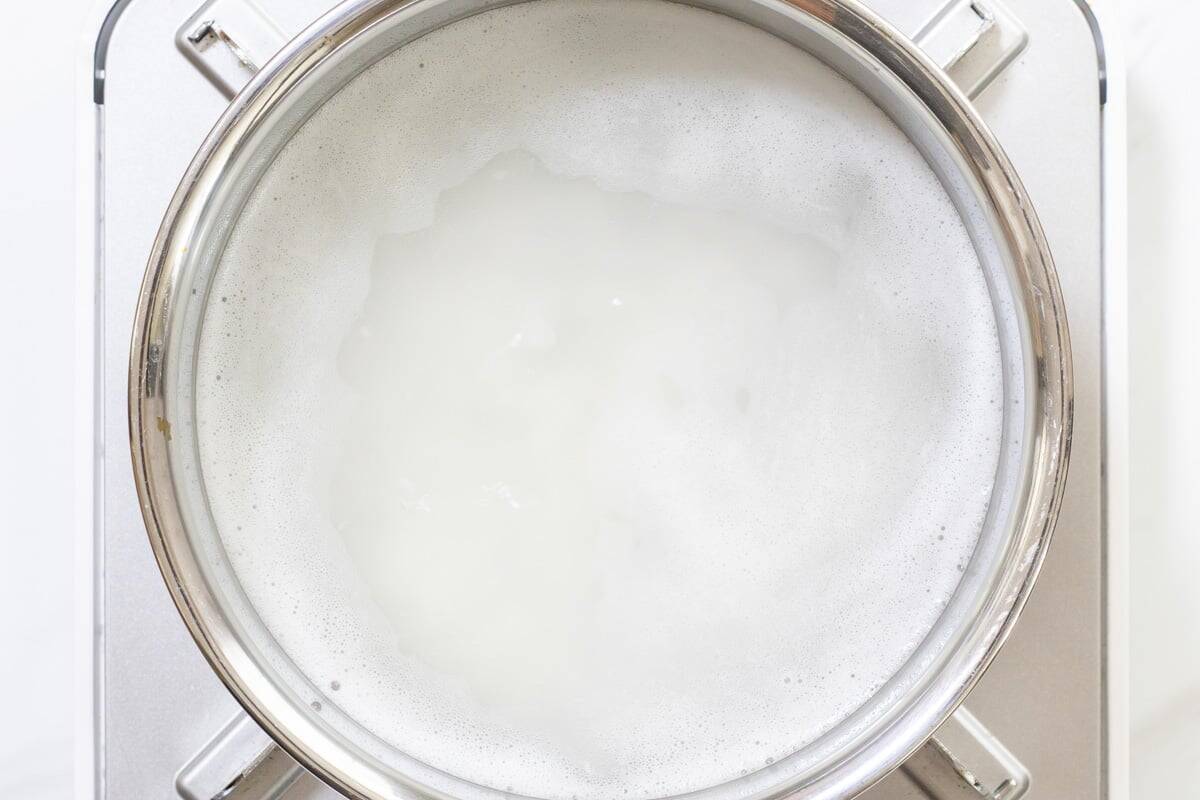
Step 2
Add the rinsed rice and water (as specified in the recipe) to a pot, then bring it to a boil. Once it starts to bubble, reduce the heat just enough to maintain a gentle simmer, and stir gently to loosen the rice from the bottom of the pot.
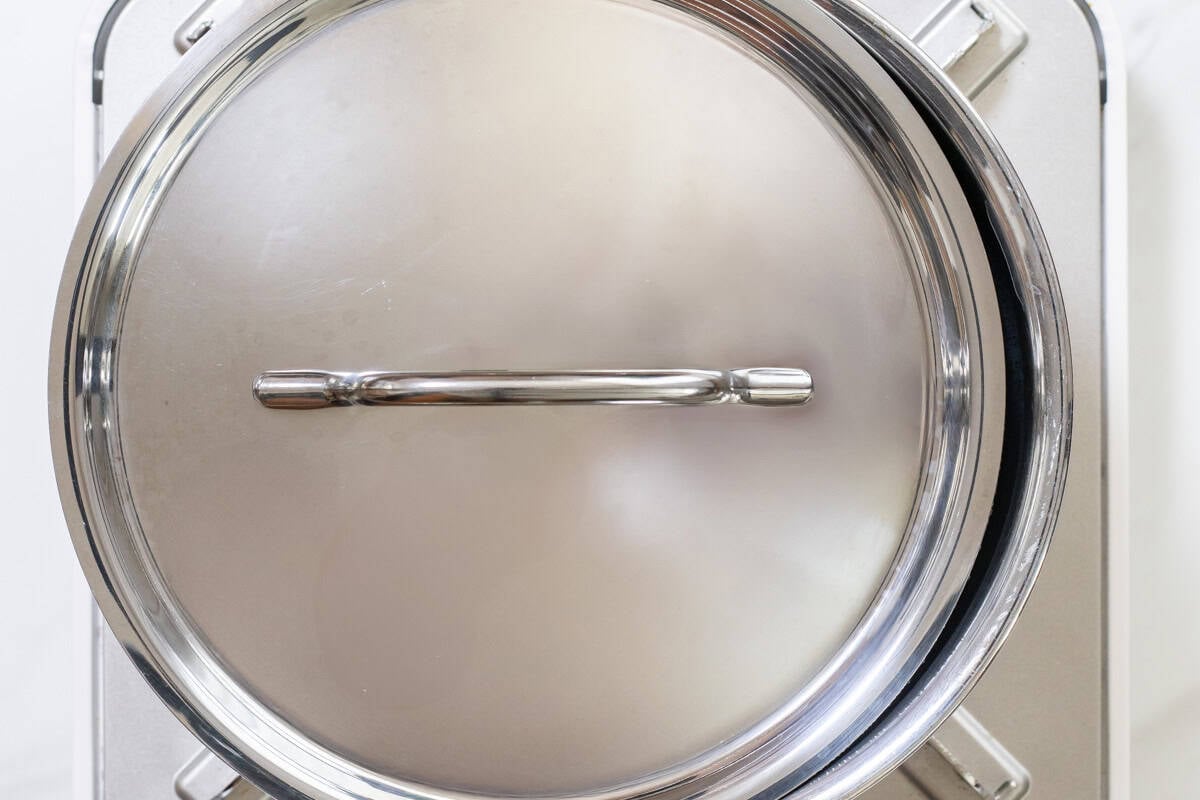
Step 3
Partially cover the pot with the lid slightly ajar and let it cook for about 35 minutes.
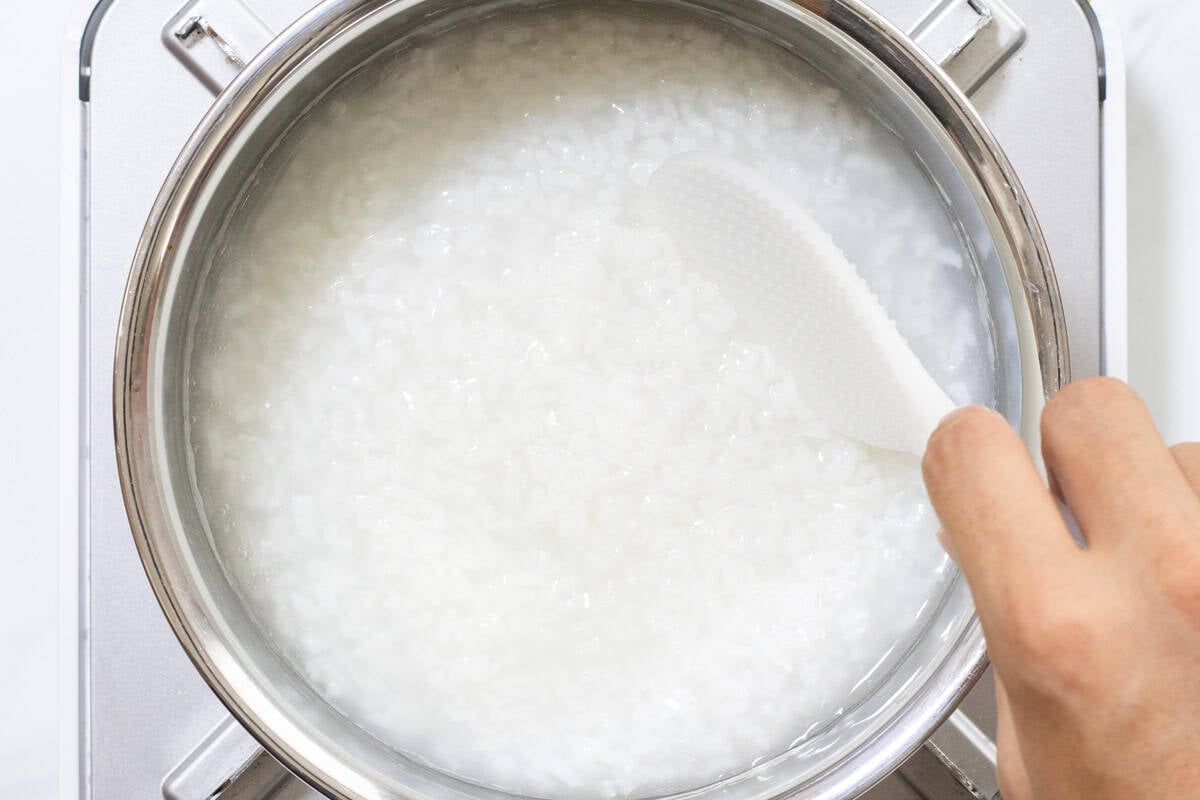
Step 4
Once the rice reaches your desired texture, turn off the heat. Add salt and stir gently to combine.
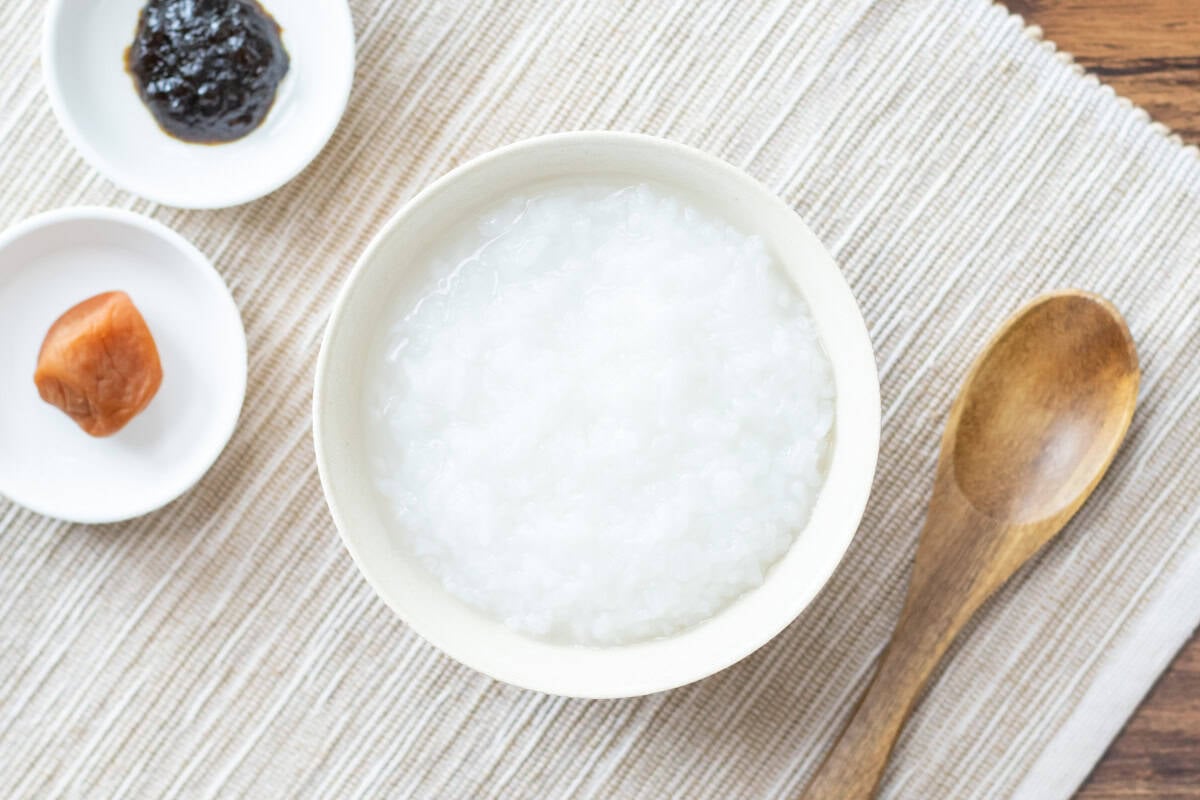
Step 5
Serve in individual bowls and add your favorite toppings, such as umeboshi (pickled plum), nori no tsukudani (nori seaweed paste), or any others you like, if desired.
To make a quicker version of okayu (when using cooked rice or microwavable rice):
🕒 Total: 15 mins
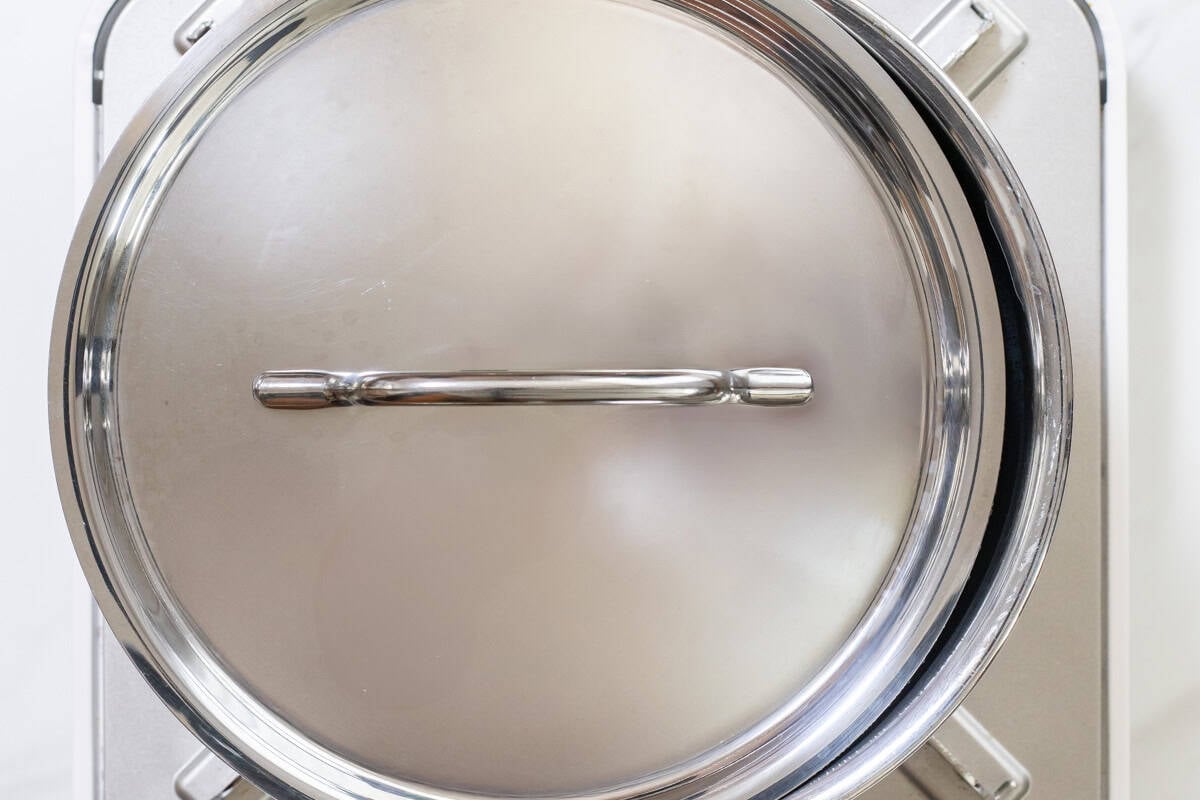
Step 1
Put the cooked rice and water into a pot and stir to loosen the rice before heating it. Once it starts to bubble, reduce the heat just enough to maintain a gentle simmer. Partially cover the pot with the lid slightly ajar and let it cook for 10 to 15 minutes.
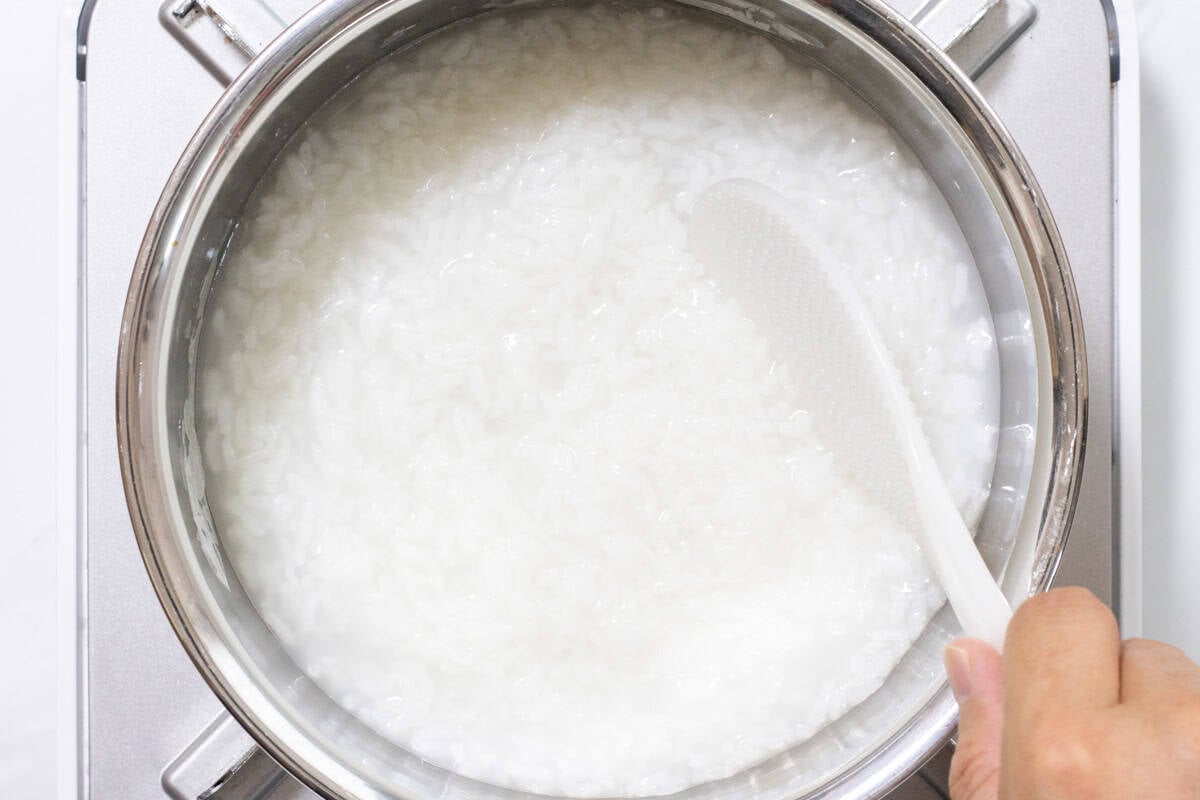
Step 2
Once the rice reaches your desired texture, turn off the heat. Add salt and stir gently to combine.
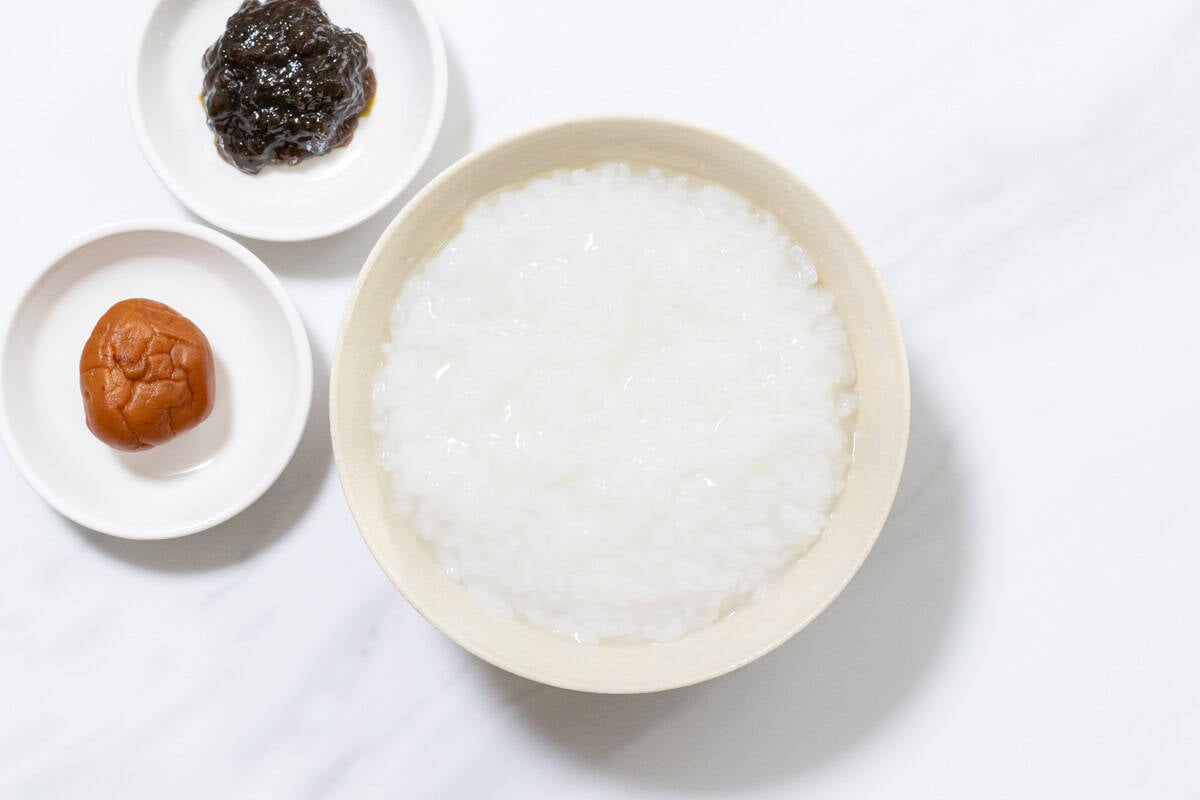
Step 3
Serve in individual bowls and add your favorite toppings, such as umeboshi (pickled plum), nori no tsukudani (nori seaweed paste), or any others you like, if desired.
To store
You can store it in the refrigerator for up to 2 days.
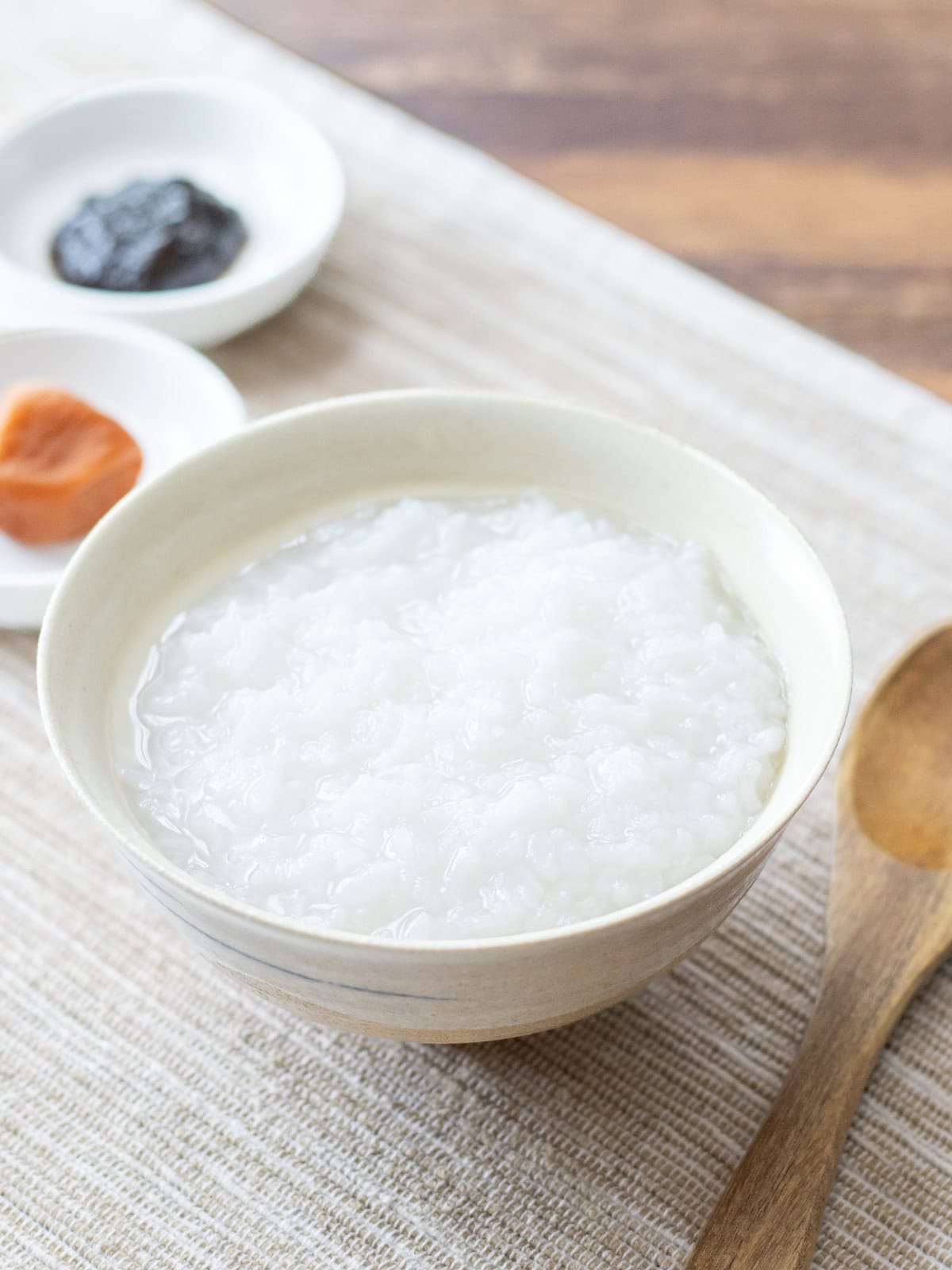
If you try this recipe, I’d love to hear what you think. Please consider leaving a review and star rating in the comments below. If you enjoyed it, I’d really appreciate it if you shared it with your friends.
Another Japanese rice recipe you'll probably love
FAQ
Yes, you can. Just follow the recipe that uses cooked rice—add the frozen rice directly without thawing it, and break it up as it cooks.
Recipe card

Okayu (Japanese Rice Porridge)
Ingredients
For traditional Japanese okayu (using uncooked rice):
- ⅜ cup Japanese short-grain rice (½ rice cooker cup for 2 servings)
- 2 ⅔ cups water (3 ½ rice cooker cups for 2 servings)
- ⅙ tsp salt
For a quicker version of okayu (using cooked rice or microwavable rice):
- 5.7 oz cooked Japanese white rice (If using microwavable rice, heat it before using.)
- 1 ⅓ cups water
- ⅙ tsp salt
Instructions
To make traditional Japanese okayu (when using uncooked rice):
- Place a sieve over a bowl, add rice, and rinse it with water (not listed in the ingredients). Repeat this process several times, changing the water each time.
- Add the rinsed rice and water (as specified in the recipe) to a pot, then bring it to a boil. Once it starts to bubble, reduce the heat just enough to maintain a gentle simmer, and stir gently to loosen the rice from the bottom of the pot.
- Partially cover the pot with the lid slightly ajar and let it cook for about 35 minutes.
- Once the rice reaches your desired texture, turn off the heat. Add salt and stir gently to combine.
- Serve in individual bowls and add your favorite toppings, such as umeboshi (pickled plum), nori no tsukudani (nori seaweed paste), or any others you like, if desired.
To make a quicker version of okayu (when using cooked rice or microwavable rice):
- Put the cooked rice and water into a pot and stir to loosen the rice before heating it. Once it starts to bubble, reduce the heat just enough to maintain a gentle simmer. Partially cover the pot with the lid slightly ajar and let it cook for 10 to 15 minutes.
- Once the rice reaches your desired texture, turn off the heat. Add salt and stir gently to combine.
- Serve in individual bowls and add your favorite toppings, such as umeboshi (pickled plum), nori no tsukudani (nori seaweed paste), or any others you like, if desired.
Notes
- You can adjust the rice-to-water ratio to make okayu with different consistencies. For more details, please refer to the section above titled “Types of Okayu and Their Textures.”
- For a quicker version of okayu, the total cooking time is about 15 minutes.
- You can store it in the refrigerator for up to 2 days.

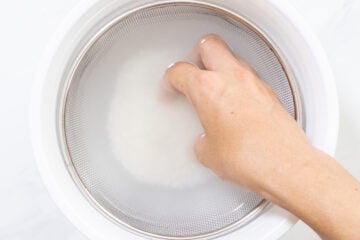
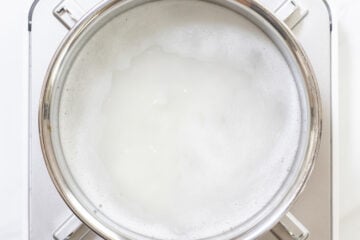
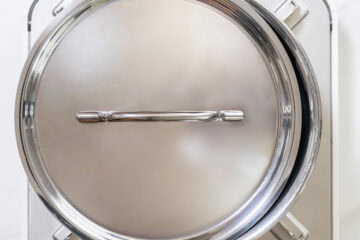
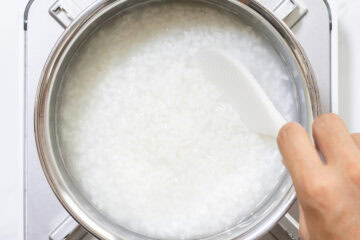
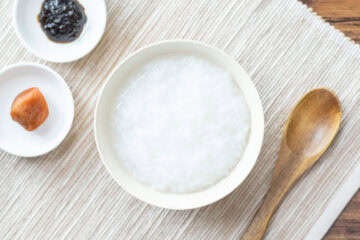
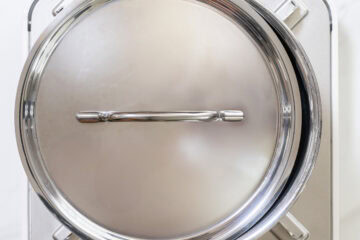
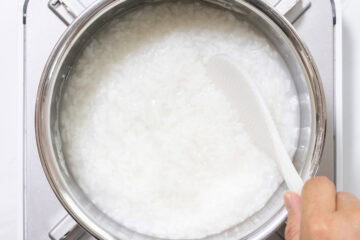
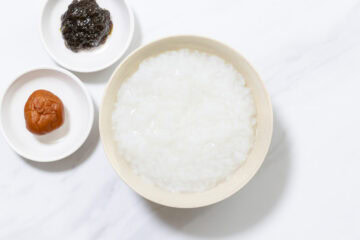
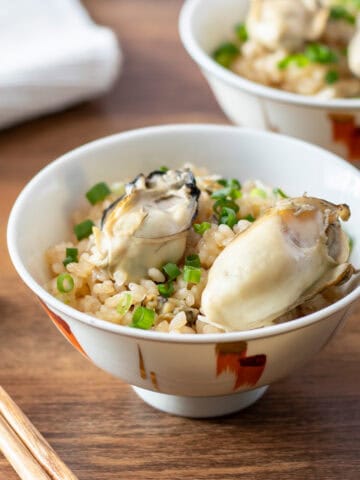
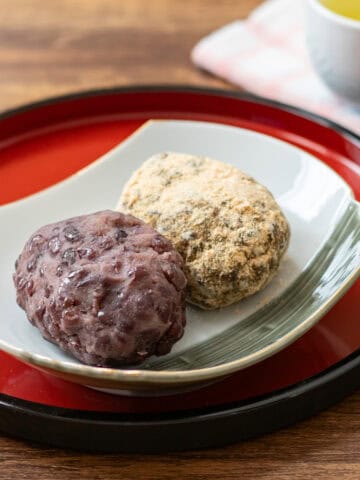
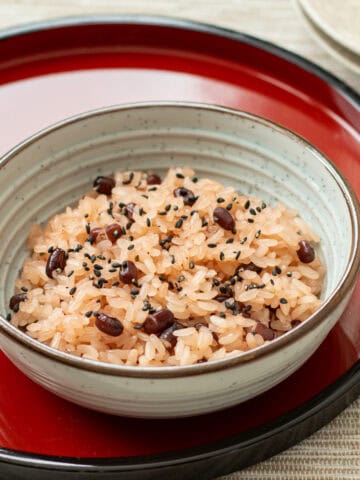
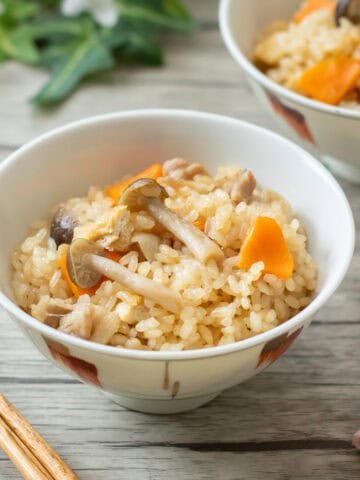
Leave a Rating and a Comment